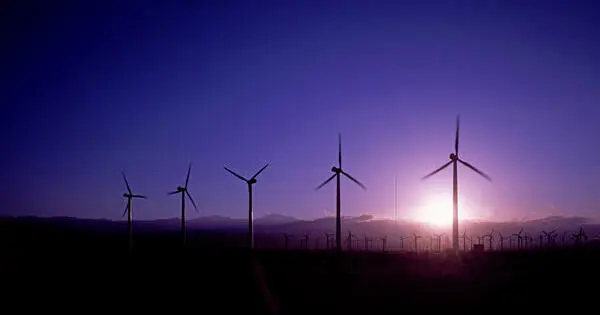Wind turbines are usually met with great enthusiasm because they are such a great source of clean, renewable energy. However, some residents living within a mile of the blades have complained that they make too much noise. So, how loud are these turbines?
A wind turbine is typically placed 300 meters or more away from a house. A turbine will have a sound pressure level of 43 decibels at that distance. To put that into perspective, the average air conditioner can produce up to 50 decibels of noise, while most refrigerators produce around 40 decibels.
Flinders University experts are using machine learning and other signal processing techniques to characterize annoying noise features from wind farms, as wind generation is one of the world’s fastest-growing renewable energy sectors. Two new publications from the ongoing Wind Farm Noise Study advance wind turbine noise assessment methods, guidelines, and wind turbine design, making wind energy more acceptable to surrounding communities.
We discovered that the amount of amplitude modulation present during the day versus night varies significantly, occurring two to five times more frequently during the night versus the day.
Mr. Nguyen
According to the new research, the ‘swoosh’ sound emitted by wind turbines at night (technically known as ‘amplitude modulation’ (AM)) is up to five times more likely to be heard by nearby residents than during the day, depending on wind direction, season, and wind farm distance.
For the first time, Flinders University Ph.D. candidate Duc Phuc (‘Phuc’) Nguyen and acoustic expert Dr. Kristy Hansen combined long-term monitoring of wind farm noise with machine learning and available knowledge to quantify and characterize AM in wind turbine noise.
“We discovered that the amount of amplitude modulation present during the day versus night varies significantly, occurring two to five times more frequently during the night versus the day,” Mr. Nguyen says.
“The noise seems to worsen after sunset when amplitude modulation can be detected for up to 60% of the night-time at distances around 1 km from a wind farm. At greater than 3 km, amplitude modulation also occurs for up to 30% of the night-time.”
The sound pressure level drops to 38 decibels at 500 meters (0.3 miles). According to Keith Longtin of GE Renewable Energy, background noise in most places ranges from 40 to 45 decibels, which means that a turbine’s noise would be lost among it. Longtin claims that the background noise in the quietest, most rural areas is 30 decibels. A turbine located a mile away would not be audible at that level.

The Wind Farm Noise Study, based at Flinders University’s Adelaide Institute for Sleep Health, is looking into noise characteristics and sleep disturbances in homes near wind farms. The link between wind turbine noise and adverse human effects is still being debated.
Dr. Hansen says the directional nature of wind turbine noise means residents living in downwind and crosswind conditions are likely to be more disturbed by wind turbines. “We found that AM occurs most often during these wind directions,” she says. “Using these recent advances in machine learning, we have been able to develop an AM detection method that has a predictive power close to the practical limit set by a human listener.”
“This includes the noise that rises and falls as the blades rotate, or AM, as well as a’swoosh’ sound, which adds to the negative effects of wind turbine noise. These studies improve our ability to measure and monitor wind turbine noise, which is likely to be more bothersome than other types of noise at the same level.”
Noise was once a major issue in the wind energy industry. Some of the early, primitive types of turbines built in the early 1980s were extremely noisy, to the point where hearing them from a mile away was annoying. The industry quickly realized that this problem needed to be dealt with, however (particularly in Europe, where turbines are often located in or near residential areas), and manufacturers went to work on making their machines quieter.















